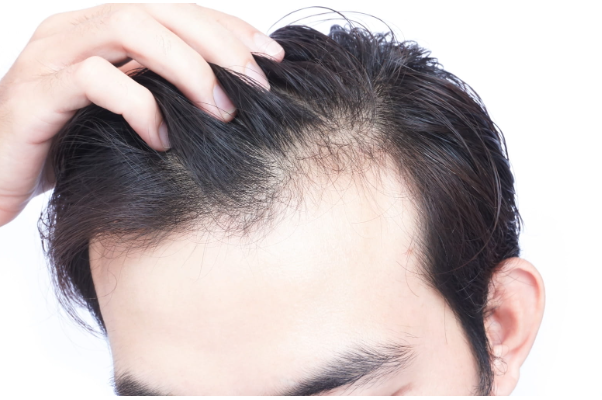Frontal Fibrosing Alopecia (FFA) has emerged as a significant concern in recent years, affecting individuals globally. Understanding the nuances of this condition is crucial for both those affected and those seeking to support them.
I. Introduction
Frontal Fibrosing Alopecia is a type of scarring hair loss that primarily affects the hairline, including the frontal scalp and eyebrows. As its prevalence rises, it becomes essential to delve into the intricacies of this condition and its profound impact on individuals.
II. Understanding Frontal Fibrosing Alopecia
Defining FFA and its Primary Characteristics
Frontal Fibrosing Alopecia is characterized by a gradual recession of the frontal hairline and the loss of eyebrows, leading to a distinct appearance Dr. Adriana Gómez Hair Transplantation. This article aims to provide a comprehensive understanding of the condition, from its onset to its progression.
Demographics and Who is Most Susceptible
Research suggests that postmenopausal women are more prone to developing FFA, but cases in men and premenopausal women have also been documented. Delving into the demographics helps us grasp the scope of the issue and identify the groups most at risk.
III. Causes and Risk Factors
Unraveling the Mysteries behind FFA
The exact cause of Frontal Fibrosing Alopecia remains elusive, making it a perplexing condition for both patients and healthcare professionals. Examining potential triggers and contributors sheds light on the intricate nature of this ailment.
Identifying Potential Triggers and Contributors
Burstiness in the development of FFA involves understanding various factors like genetics, hormonal changes, and immune system responses. Exploring these elements offers valuable insights into prevention and management strategies.
IV. Symptoms and Diagnosis
Recognizing the Early Signs of FFA
Early detection is crucial for effective management. This section provides readers with a detailed look at the symptoms associated with Frontal Fibrosing Alopecia, aiding in timely recognition and intervention.
The Diagnostic Process and Its Challenges
Diagnosing FFA can be challenging due to its subtle onset and resemblance to other hair loss conditions. Unraveling the diagnostic intricacies ensures a more accurate identification and appropriate treatment plan.
V. Treatment Options
Current Medical Interventions for FFA
Various medical interventions exist for managing Frontal Fibrosing Alopecia, ranging from topical corticosteroids to oral medications. Detailing these treatment options empowers individuals to make informed decisions about their health.
Lifestyle Changes and Alternative Remedies
Beyond conventional treatments, lifestyle modifications and alternative remedies can contribute to alleviating symptoms. This section explores holistic approaches that individuals may consider as complementary to medical interventions.
VI. Coping with Frontal Fibrosing Alopecia
Addressing the Emotional and Psychological Aspects
The impact of FFA extends beyond the physical realm, affecting emotional well-being. Strategies for coping with the emotional toll and maintaining a positive mindset are discussed, fostering resilience in those facing this condition.
Support Groups and Resources for Individuals with FFA
Building a supportive community is crucial for individuals dealing with FFA. Highlighting support groups and resources provides a lifeline for those seeking understanding, empathy, and shared experiences.
VII. Prevention and Management
Tips for Preventing FFA
While prevention may not be guaranteed, adopting certain practices can reduce the risk of developing Frontal Fibrosing Alopecia. Practical tips for maintaining scalp and hair health are shared, emphasizing proactive measures.
Strategies for Managing and Minimizing Symptoms
For those already grappling with FFA, effective management strategies are essential. This section outlines practical steps individuals can take to minimize symptoms and enhance their overall quality of life.
VIII. The Latest Research
Exciting Developments and Ongoing Studies
The field of FFA research is dynamic, with ongoing studies exploring new treatments and insights. Keeping readers informed about the latest developments fosters hope and encourages a proactive approach to managing the condition.
Hope for the Future of FFA Treatment
As scientific understanding advances, the prospect of more effective treatments for FFA becomes promising. Exploring the potential future landscape of Frontal Fibrosing Alopecia treatment offers optimism for those affected.
IX. Real-life Stories
Personal Experiences of Individuals with FFA
Real-life stories provide a human touch to the article, sharing the experiences of individuals living with Frontal Fibrosing Alopecia. These narratives highlight resilience, adaptation, and the varied journeys people navigate with this condition.
Overcoming Challenges and Finding Empowerment
Through these stories, readers gain insights into how others have faced and overcome challenges associated with FFA. Finding empowerment amid adversity becomes a central theme, fostering a sense of community and understanding.
X. Expert Insights
Perspectives from Dermatologists and Specialists
Dermatologists and specialists offer their perspectives on Frontal Fibrosing Alopecia, providing valuable insights into the condition's clinical aspects and the latest advancements in treatment. Expert advice enhances the credibility and depth of the article.
Recommendations for Dealing with FFA
Practical recommendations from experts guide individuals on navigating the complexities of FFA, offering a roadmap for effective management and coping strategies.
Common Queries about FFA and Their Answers
What is Frontal Fibrosing Alopecia?
A concise definition of FFA and its primary characteristics.
Who is Most Susceptible to FFA?
Exploring the demographics and risk factors associated with FFA.
How is FFA Diagnosed?
Unraveling the diagnostic process and potential challenges.
What Treatment Options are Available for FFA?
Detailing both medical interventions and lifestyle changes.
Are There Support Groups for Individuals with FFA?
Highlighting the importance of community support and available resources.
XII. Conclusion
In conclusion, Frontal Fibrosing Alopecia is a complex condition that demands a multifaceted approach. By understanding its nuances, exploring treatment options, and fostering a supportive community, individuals can navigate the challenges posed by FFA with resilience and optimism.

